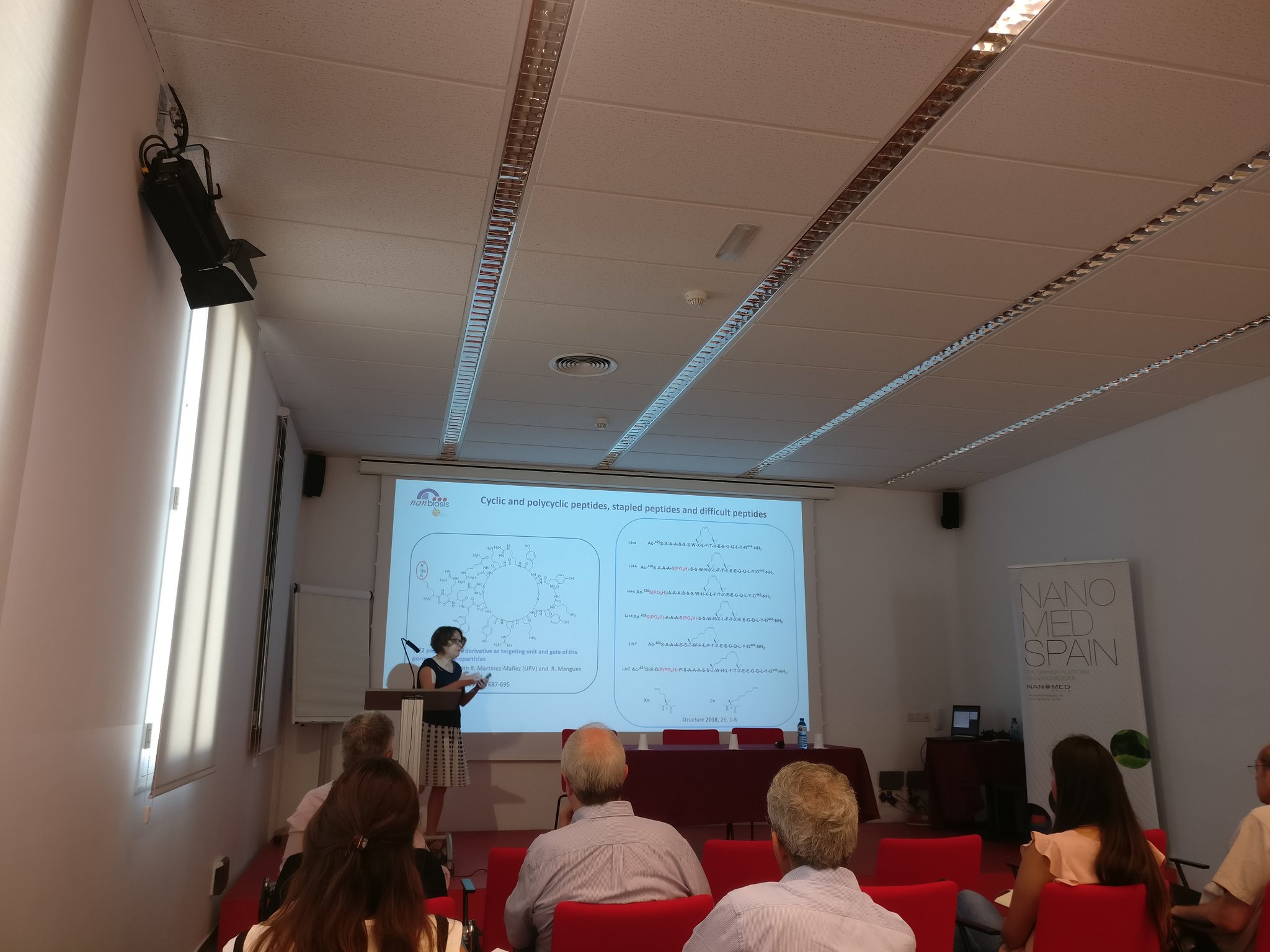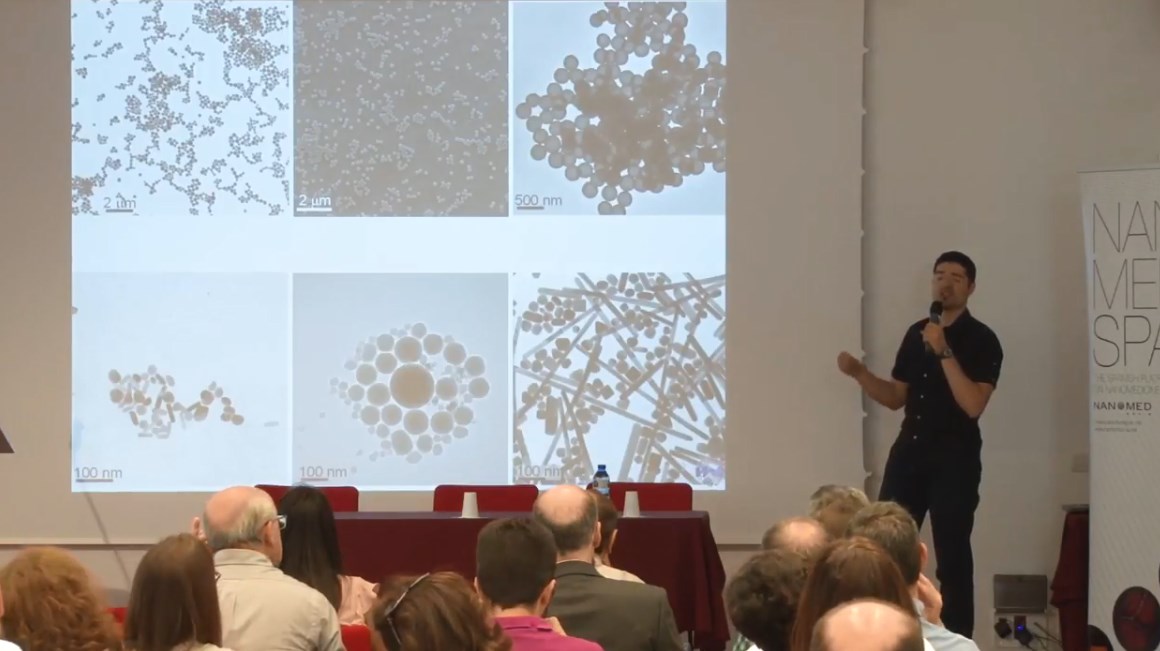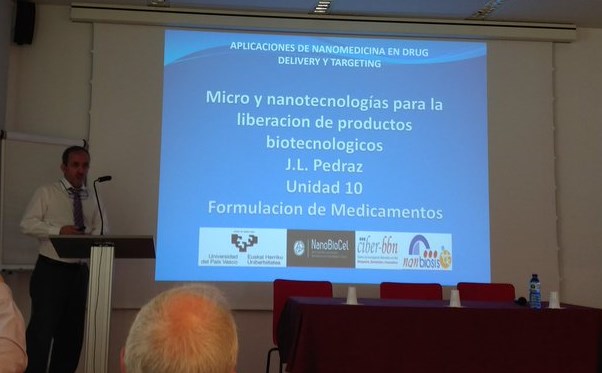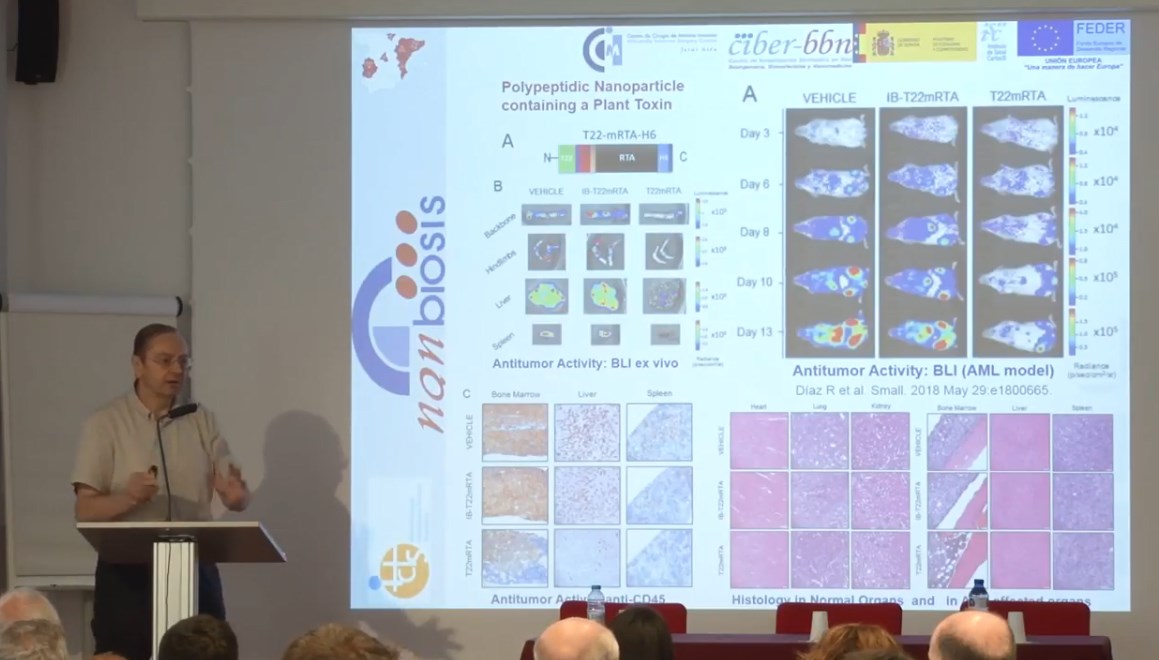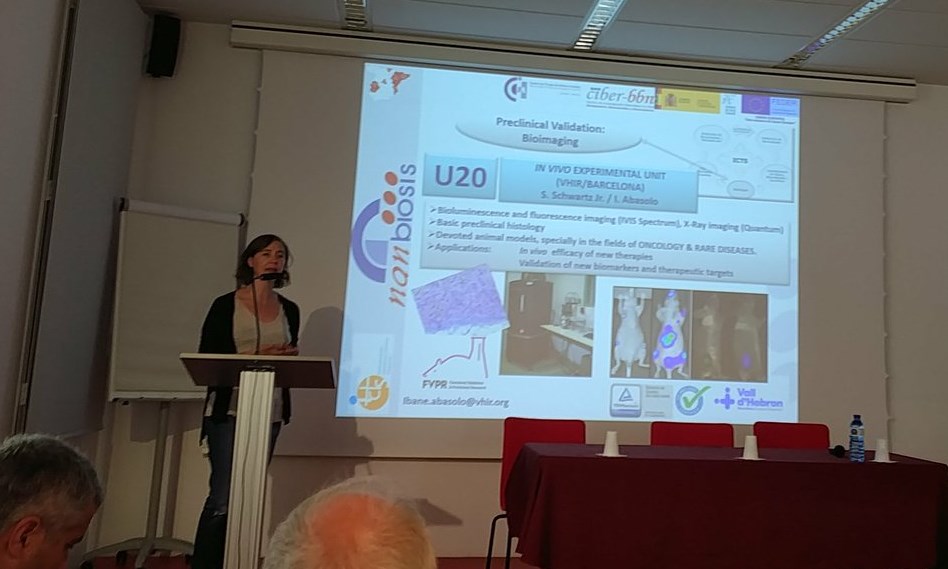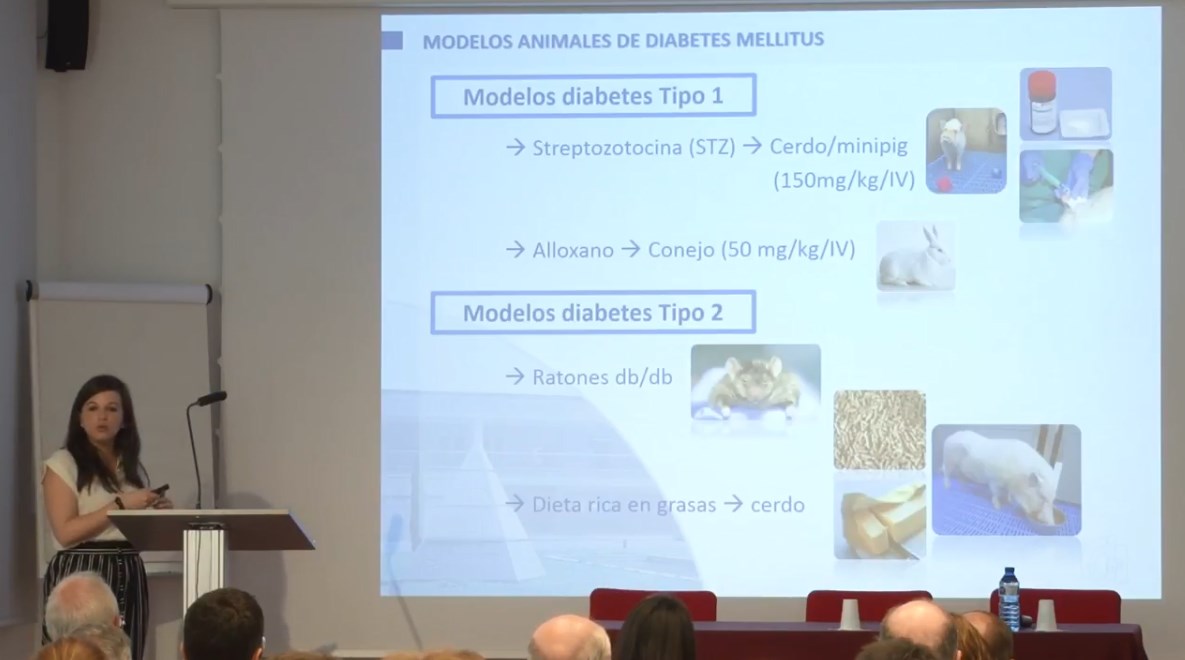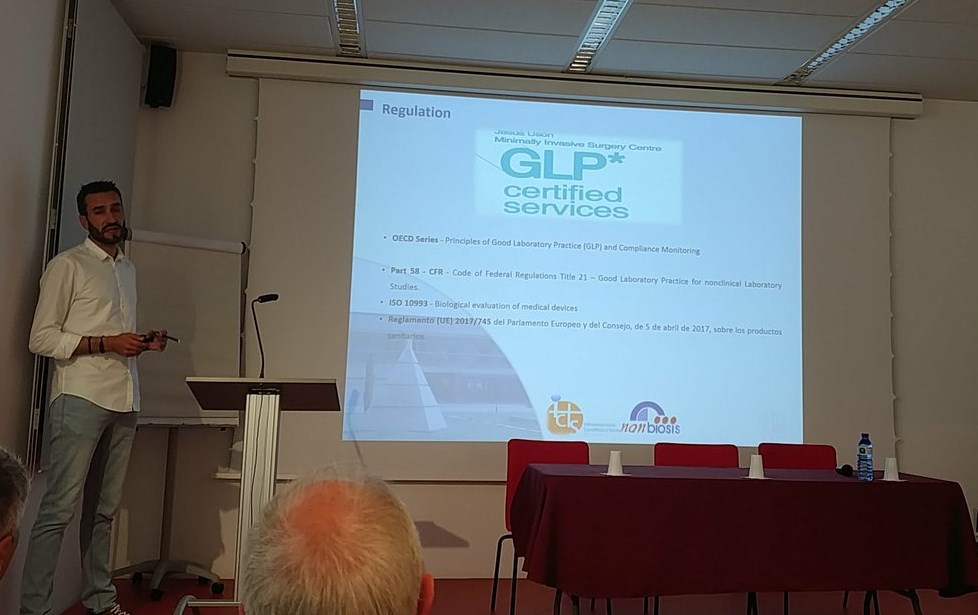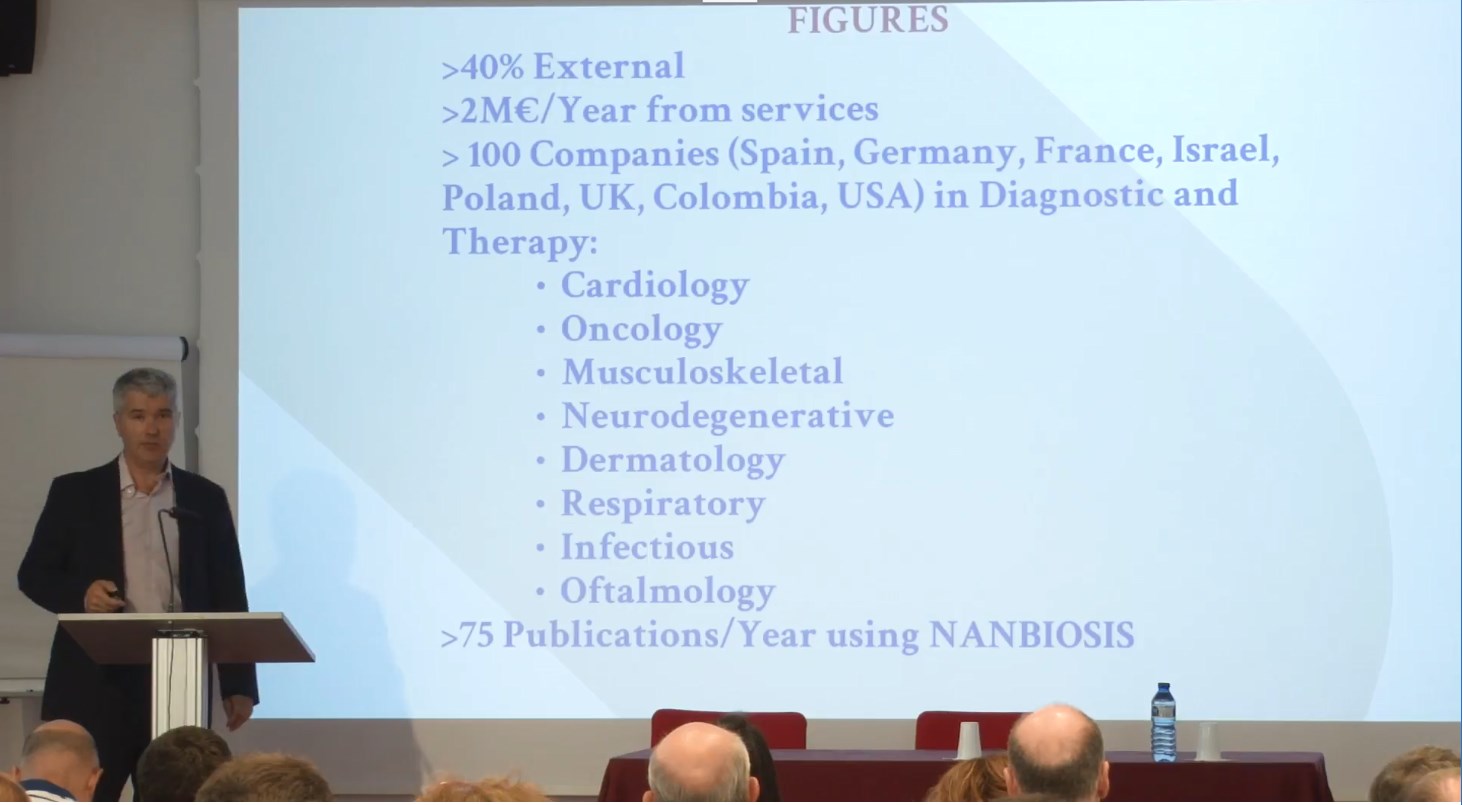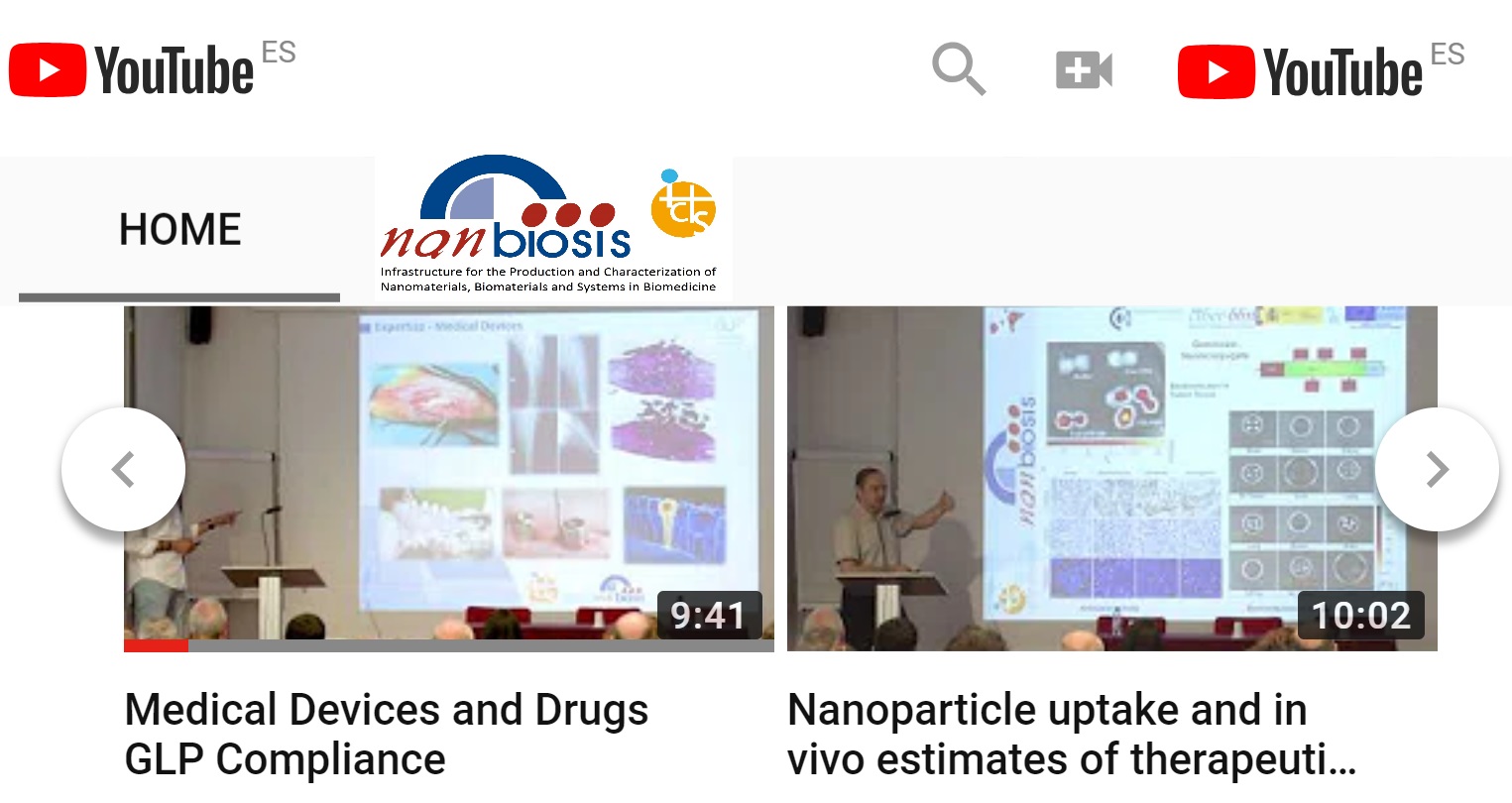Peptides, targeting units and drug conjugates
Miriam Royo, Scientific Coordinator of Unit 3 of NANBIOSIS explains in this video the expertise of the unit in the preparation of difficult peptides (Cyclid and polycyclic peptides, stapled peptides and dificult peptides, depsipetides, natural products and libraries, peptidomimetic libraries, peptides as antigens or adjuvants, tarjeted drug conjugates, etc… as well as therapeutic agen-PEG-targeting unit conjugates
